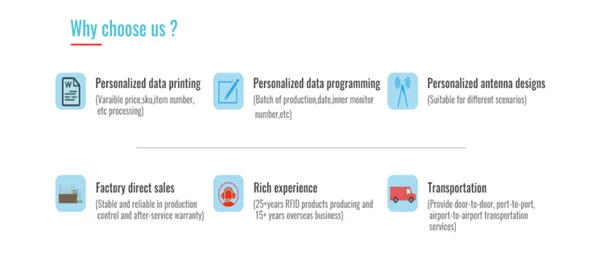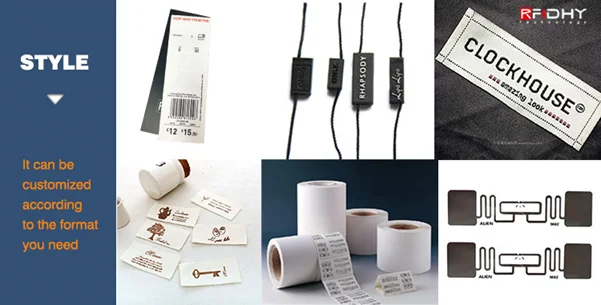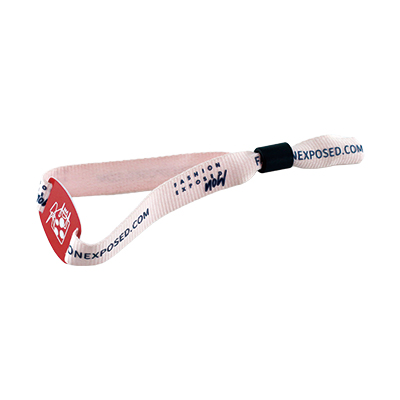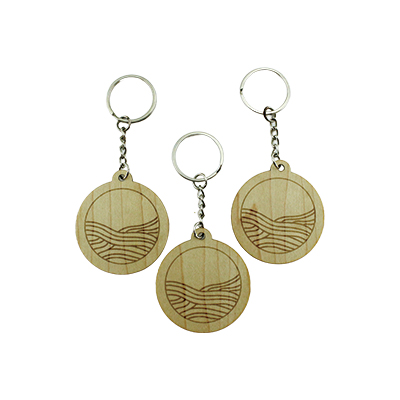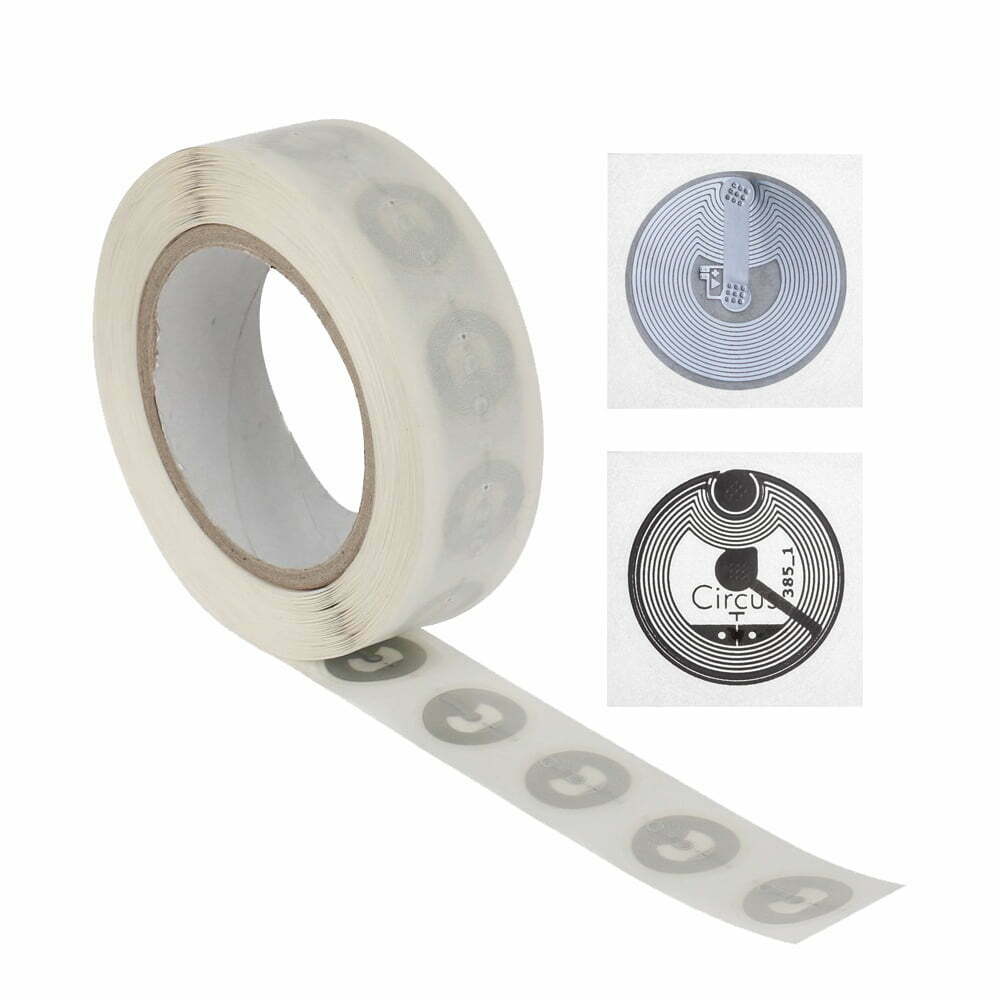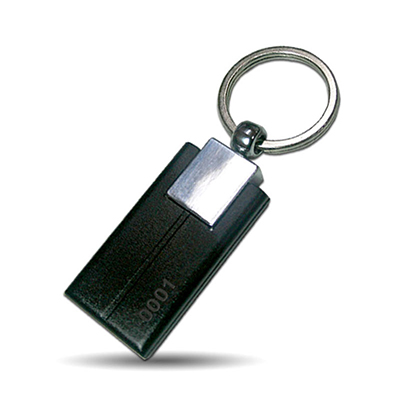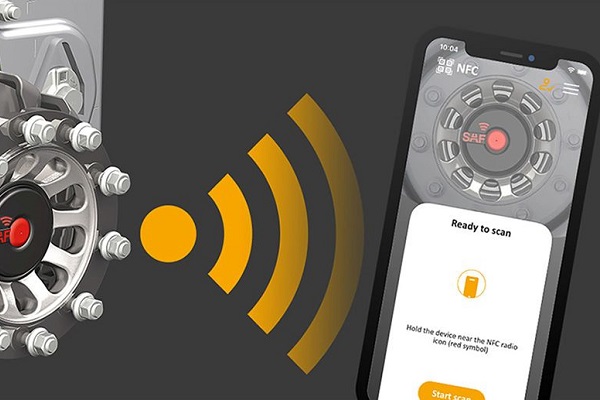The line and clothing industries were the earlier ones to apply RFID technology to reduce the lead time between manufacturing and retailing.
Radio Frequency Identification (RFID) technology has proved to be a savior for the rapidly changing fashion industry by streamlining their operations and improving the efficiency.
How does RFID clothing tags function?
Radio Frequency Identification (RFID) technology uses radio waves to digitally capture data with minimal manual intervention. RFID tagging system is similar to barcoding with additional advantages over it.
RFID technology uses radio waves to automatically identify objects, collect data about them, and enter those data directly into computer systems with little or no human intervention. A typical RFID machine has three components: RFID tag, RFID reader and the antenna. RFID tags contain a unique number and other details which is captured by the reader and transformed in to data that gets saved in computers.
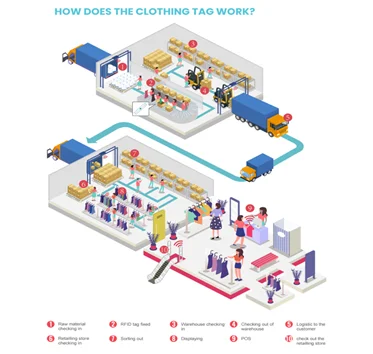
What is the use of RFID tags in clothing industry?
RFID provides better control and visibility at each step of the supply chain. Businesses can strictly control production, sales and storage throughout the chain at different locations without minimal human resource. Clothing industries maintain large stocks which is difficult to manage manually. RFID technology allows these companies to improve their efficiency, reduce time consumption and minimize human errors.
Improves quality: Clothing industry suffers a lot from product damages and counterfeit products. It is not easy to identify each damaged product manually. RFID tagging helps in tracking the merchandise from manufacturing to storage and allow scanning for any damages at each check point.
Better inventory control: RFID tagging helps the seller in locating their line stock. They can quickly find out where a line is stored and also proactively re-stock a particular style before it gets sold out completely. RFID tagging helps in tracking which style is moving fast and what designs are more in demand. In the fast-moving supply chain scenario, RFID tagging does the job in seconds and keeps the manufacturer and seller ready with their stock on time.
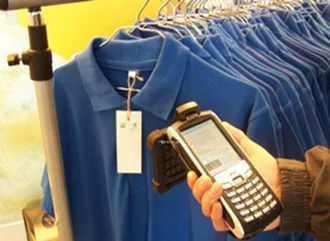
Greater control and visibility: RFID tagging provide better control and visibility than barcodes as the stock is automatically tracked and monitored at each step of the supply chain. Companies can easily find out missing product and track damages.
Long Lasting: The traditional tags and barcodes can get tampered and damaged due to wear and tear. But, RFID tags are highly durable and long lasting. They do not get damaged in harsh environment, heat, dirt and mud.
Wide range tracking: Traditional tags and barcodes require a reader to manually read each barcode. Whereas, RFID reader can scan multiple tags even from a distance of 100 feet. RFID doesn’t require line of site. This makes the process fast and reliable.
Data security: The RFID tags have dedicated chip with a unique number that cannot be copied. Traditional systems and barcodes are vulnerable to data breach and recording errors. Anyone can easily duplicate a barcode. RFID tags offer advanced data encryption which hackers cannot copy. It also reduces any chances of missed items when used to collect data on large numbers of items at once, thereby minimising chances of a human error.

Anti-theft: The RFID reader has a relay output function. When the reader reads a specific tag, it closes the relay triggering the external relay to close and activate the alarm indicator.
Low operating cost: RFID tagging system is less costly and time-consuming than the traditional system. The traditional system involves huge labour cost. Also, the traditional tags need frequent replacements due to wear and tear. RFID tags last for a long time, hence the replacement cost reduces. The economies of scale bring down the operating cost as with the RFID system, a huge stock of goods and assets can be scanned with limited human resource and logistics.
Shorter process: With Barcode, the reader has to scan each object one by one which makes the process time taking. But, with RFID, thousands of tags can be scanned in seconds reducing the operational time to a great extent. Also, RFID technology can be integrated with other manufacturing and supply chain technologies and the lead time between order to delivery can be reduced considerably.
Read/write capacity: A barcode is only readable and once printed, the data on the barcode label cannot be changed. But, RFID tags can be read and modified anytime.
RFID tags store more data: As compared to traditional tags and barcodes. RFID tags can store more data in the non-volatile memory.
RFID can be applied with barcode: If you are using barcodes and would like to switch to RFID, or would like to use both simultaneously. You can easily attach printable paper labels to RFID tags.
RFIDHY combines innovative RFID technologies with decades of comprehensive expertise in clothing tags and labels to provide best-in-class, tailored business solutions to our customers. Every RFID clothing tag and label contains electronically stored information including product type, size, color and various other identification and tracking features.
All of our RFID clothing tags offer faster and more efficient product authentication, reduce the risk of lost or counterfeit products, and complete visibility across the global supply chain in real time.
